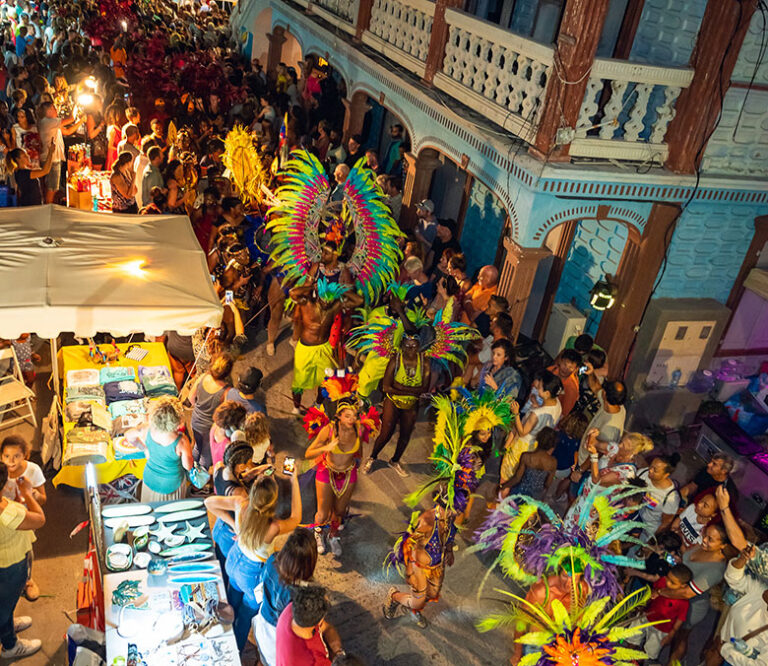Culture in Saint Martin
Saint Martin is a small Caribbean island with a rich, multicultural identity, shaped by French, Dutch, African, and Caribbean influences. The island is divided into two parts:
- Saint-Martin (north, French overseas collectivity)
- Sint Maarten (south, Dutch constituent country)
Despite the political division, the culture flows freely across the border, creating a shared, vibrant island spirit.
Cultural Highlights of Saint Martin
| Aspect | Details |
|---|---|
| Languages | French (official, in the north), Dutch (official, in the south), but English and Antillean Creole are widely spoken |
| Ethnic Mix | African-Caribbean, European, Indian, Syrian-Lebanese, Chinese, and Latin American roots |
| Main Religions | Christianity (Catholicism, Protestantism, Evangelism), with small communities of Islam, Hinduism, and Judaism |
| Cultural Identity | A fusion of European sophistication and Caribbean warmth, known for openness, music, fashion, and festivals |
Music and Dance
Saint Martin’s music scene is vibrant and rhythmic. Popular styles include:
- Zouk – Fast, rhythmic, French Caribbean genre
- Soca and Calypso – High-energy carnival beats from Trinidad & Tobago
- Reggae & Dancehall – Influences from Jamaica
- Kompa – Haitian dance music widely loved on the island
- Steelpan music – Played during parades and festivals
- Gwo ka & Tambú – Traditional drumming, with African roots
Carnival parades are cultural hotspots for music, dance, and street performance.
Cuisine
A perfect Creole fusion of French gastronomy and Caribbean spices.
Popular dishes include:
- Accras (fried codfish fritters)
- Colombo (a curried meat stew)
- Grilled lobster or conch
- Boudin (spicy blood sausage)
- Johnny cakes, saltfish, and plantains
- French pastries and cheeses in Saint-Martin (north)
- Dutch gouda cheese and Indonesian influences in Sint Maarten (south)
Art and Craft
- The island is home to many painters, sculptors, and artisans.
- Art reflects themes like slavery, nature, sea life, and Caribbean freedom.
- Local crafts include handmade jewelry, wood carvings, shell art, and textiles.
Festivals and Celebrations
| Festival | Description |
|---|---|
| Carnival | Held in February (Dutch side) and April/May (French side). Colorful parades, music, dancing, and costumes. |
| Bastille Day (July 14) | Celebrated on the French side with parades and fireworks. |
| Sint Maarten Day (Nov 11) | A joint cultural day for both sides — concerts, dance, and sports. |
| Fish Day (first Sunday in May) | French side event celebrating local fishing, food, and live music. |
Dress and Style
- Everyday wear is casual, light and tropical.
- Cultural attire includes bright African prints, French island dresses, and Carnival costumes.
- Jewelry and accessories are often handmade and reflect island life (seashells, beads, leather).
Historical and Cultural Influences
- Colonized by France and the Netherlands in the 1600s.
- Slavery and African heritage deeply influence culture, language, and music.
- Islanders are proud of their Creole identity, often preserving oral traditions, proverbs, and storytelling.



